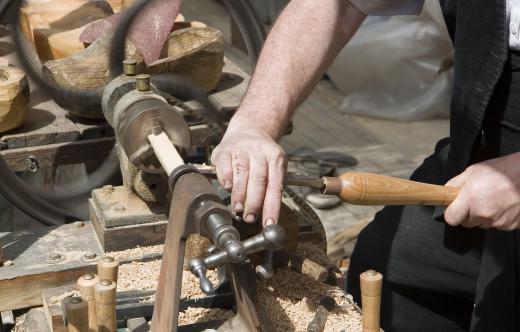A lathe bed is the area of the lathe that spans the distance from the headstock to the tailstock and is positioned underneath the workspace. Often referred to as the frame of the machine, the lathe bed is a very important component of the lathe and is responsible for keeping the tooling level and stable. Made of heavy steel, the bed is hardened to prevent galling and damage from occurring when the different components are tightened into position along the bed rails. Often considered the most basic component of the lathe, the lathe bed is actually the genesis of all turning projects, with the squareness and accurate measurements depending on the strength and accuracy of the bed construction.
While the most common design of the lathe is of a horizontal machine, many models offer an adjustable lathe bed that can be set up for vertical turning as well. On most lathe designs, the drive motor is located at one end of the machine with the bed extending out and away from the motor assembly and the tail stock mounting on the opposite end of the bed. Tool rests and a vast array of attachments are found riding on the rails of the bed all across the length. One function of the bed rails that is very important is to provide a perfectly level and evenly-distanced surface from which to measure a workpiece.

Many lathes have threaded rod and screws running the length of the lathe bed to drive self-actualized or automatic components back and forth over the distance of the workpiece. Once properly adjusted, the operator is able to engage a drive unit and allow the tooling to proceed over the turning workpiece at the correct speed to produce the best results. This can eliminate uneven cutting depth and avoid rough and uneven surface finishes caused by alternating speed of the tooling. This feature is considered very helpful when completing tasks such as finishing cuts, knurling and creating fine points.
It is important to keep the lathe bed clean and free of debris so that the tooling can glide smoothly over the frame rails without catching or jerking. On a wood lathe, it is often enough to maintain a clean bed with a soft-bristled brush and a compressed air nozzle. Metal lathes often require a bit more cleaning to remove any loose metal chips that get lodged in the workings of the various rests and attachments on the lathe bed. A light coat of oil keeps everything running smoothly.
